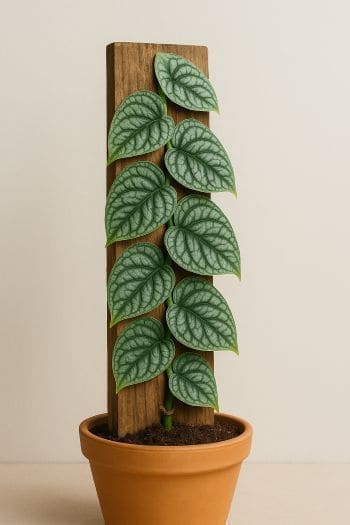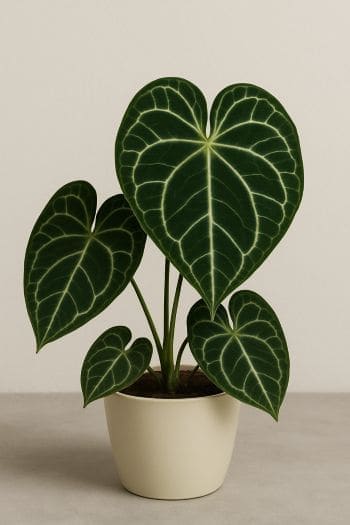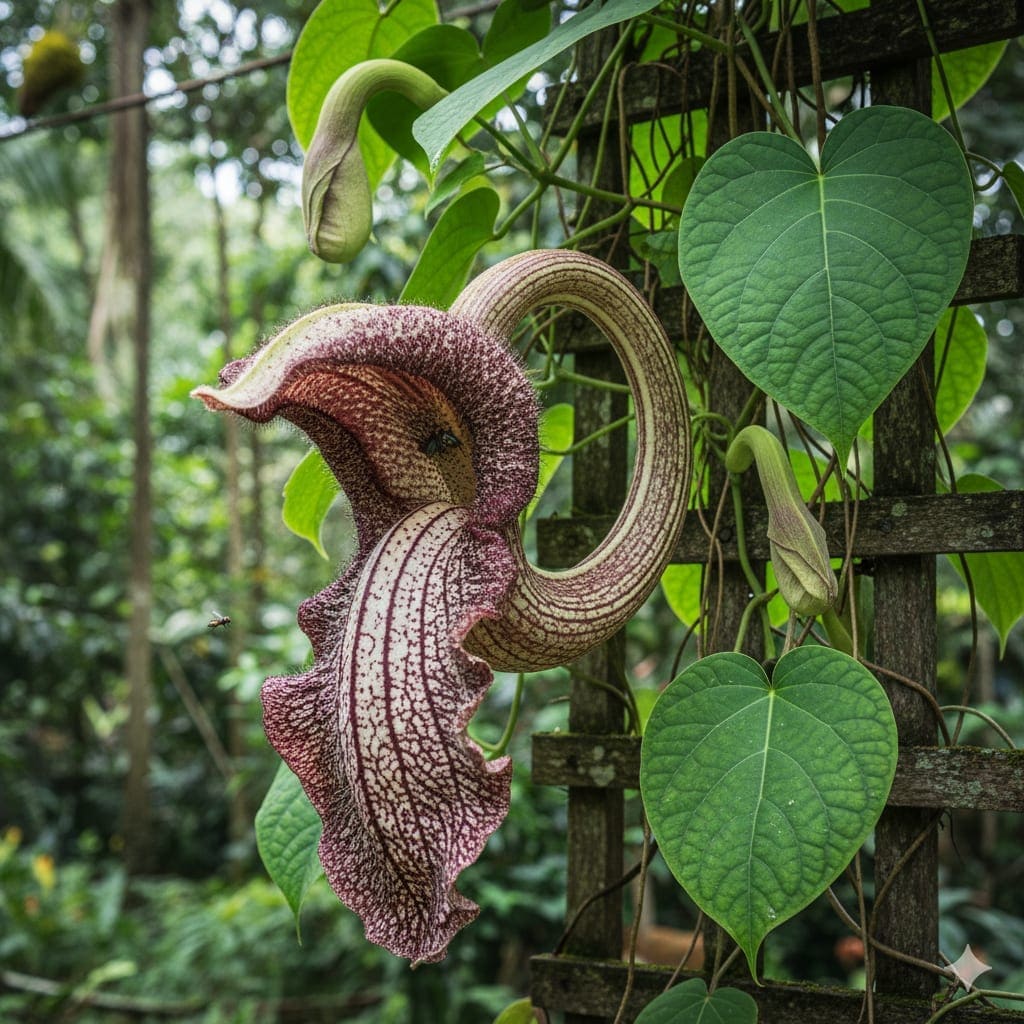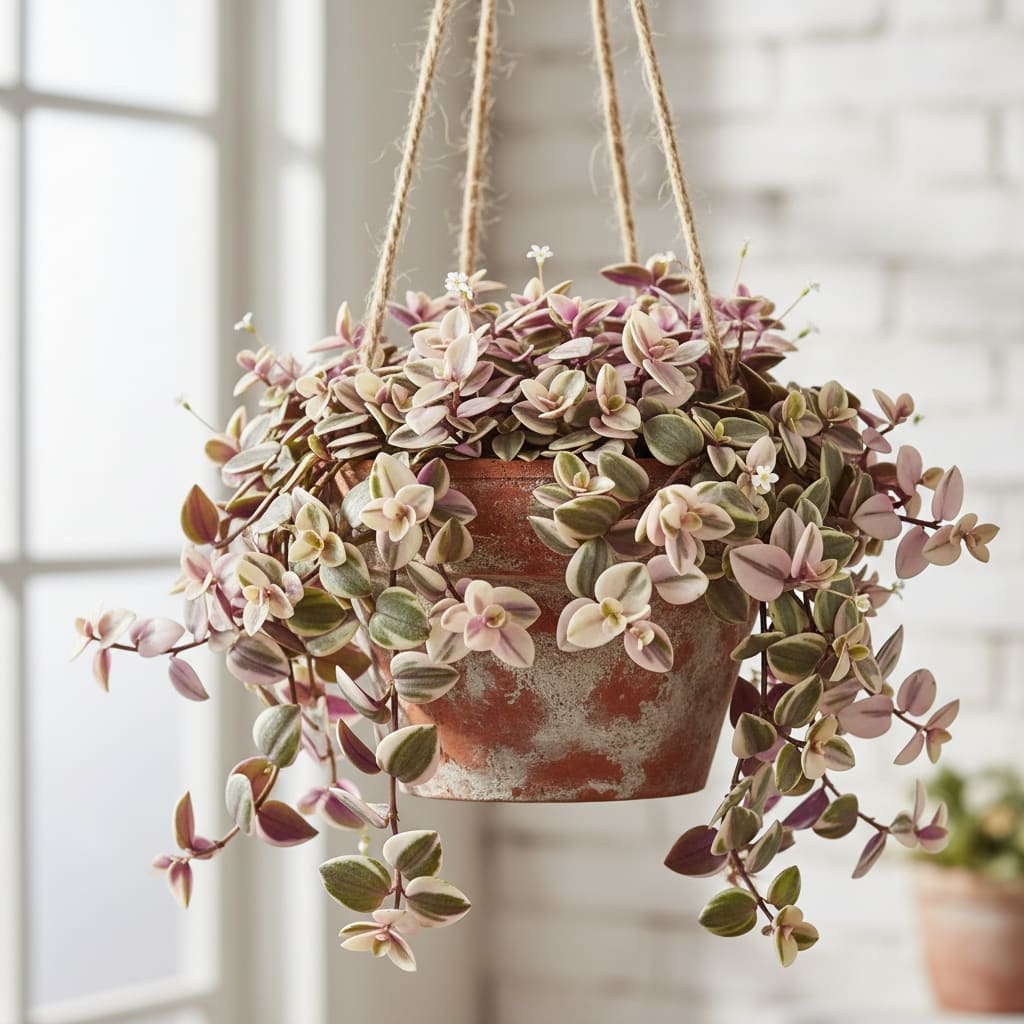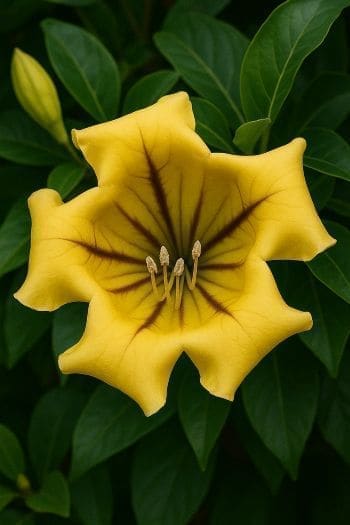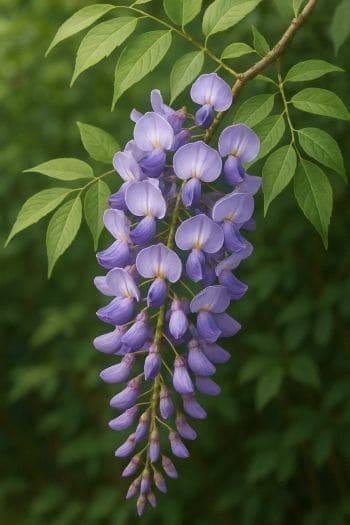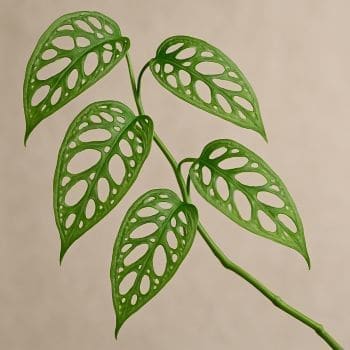Monstera dubia Care & Growing Guide
Overview
Monstera dubia is a rare and visually striking climbing aroid native to the tropical rainforests of Central and South America. Known for its unique shingling growth habit, the juvenile leaves lie flat against the climbing surface, overlapping like roof shingles. As the plant matures, its leaves transform into larger, fenestrated foliage more typical of the Monstera genus. The species name dubia comes from the Latin for “doubtful,” reflecting early botanical uncertainty about its classification.
In the wild, Monstera dubia climbs tree trunks in humid understories, thriving in dappled light and warm, moist conditions. Indoors, it makes an intriguing specimen for plant enthusiasts who can provide the right environment for its distinctive growth.
Identification & Growth Habit
Monstera dubia is a climbing vine that changes dramatically as it matures:
- Juvenile stage: Small, heart-shaped leaves with silver and dark green variegation, pressed flat against the surface it climbs.
- Mature stage: Larger leaves with characteristic Monstera perforations and loss of shingling habit when reaching the canopy or bright light source.
In cultivation, the plant will climb a moss pole, wooden board, or other vertical support, mimicking its natural growth up tree trunks.
Light & Placement
Provide bright, indirect light to replicate the dappled sunlight of its native rainforest. Avoid harsh direct rays, which can scorch delicate juvenile leaves. A spot near an east-facing window or a few feet back from a south- or west-facing window with sheer curtains works well. Consistent lighting helps maintain healthy growth and leaf coloration.
Watering & Humidity
Water when the top 2–3 inches of soil feel dry to the touch. Use a moisture meter if needed. Always allow excess water to drain freely to prevent root rot. Reduce watering in winter when growth slows.
Humidity: Monstera dubia thrives in high humidity (60%+). If indoor air is dry, increase moisture by:
- Using a room humidifier
- Placing the pot on a pebble tray with water (without submerging the base)
- Misting the foliage regularly
Crispy leaf edges are a common sign of insufficient humidity.
Soil & Repotting
Use a well-draining potting mix composed of peat moss and standard indoor potting soil. A pot with drainage holes is essential. Repot every two years or when roots become crowded, ideally in spring or early summer to minimize stress.
Fertilizing
Feed monthly during the active growing season (spring through early autumn) with a balanced, water-soluble fertilizer diluted to half strength. Alternatively, apply a slow-release fertilizer three times per year. Avoid over-fertilizing, which can damage roots and cause leaf burn.
Pruning & Training
Prune to control size, remove damaged leaves, or encourage bushier growth. Always use clean, sharp tools. To train Monstera dubia:
- Provide a vertical support such as a moss pole, wooden plank, or trellis.
- Secure stems gently with soft ties or plant clips.
- Keep the climbing surface slightly moist if using moss to encourage aerial roots to attach.
Propagation
Monstera dubia is most commonly propagated via stem cuttings. Follow these steps:
- Select a healthy stem with at least one node (the point where leaves and aerial roots emerge).
- Cut just below the node using sterilized scissors or pruners.
- Place the cutting in water or directly into moist, well-draining soil.
- If rooting in water, change the water every few days to prevent stagnation.
- Once roots are 2–3 inches long, transfer to a pot with suitable soil mix.
- Keep in warm, humid conditions until new growth appears.
Common Problems
Pests
- Spider mites: Look for fine webbing and stippled leaves. Treat with insecticidal soap or neem oil.
- Mealybugs: White, cottony masses on stems or leaf joints. Remove manually and treat with horticultural oil.
- Scale insects: Brown, shell-like bumps. Scrape off gently and apply targeted insecticide if needed.
Diseases
- Root rot: Caused by overwatering or poor drainage. Remove affected roots and repot in fresh, well-draining soil.
- Leaf spot: Fungal or bacterial spots may appear in overly wet conditions. Improve air circulation and avoid wetting foliage.
Toxicity & Pet Safety
Monstera dubia is toxic to cats, dogs, and humans if ingested, due to insoluble calcium oxalates. Keep out of reach of pets and children, and wear gloves if you have sensitive skin when handling cuttings or sap.
Styling & Decor Tips
Highlight Monstera dubia’s shingling habit by mounting it on a decorative wooden board or moss pole in a bright, humid corner. Its compact juvenile leaves make it suitable for narrow vertical spaces. As it matures, it can become a dramatic focal point with large, fenestrated leaves.
Varieties & Cultivars
There are no widely recognized cultivars of Monstera dubia. Variation in leaf size, shape, and variegation can occur naturally depending on growing conditions and maturity.
Buying Tips & Maturity
When purchasing, look for healthy, pest-free plants with firm, vibrant leaves and visible nodes for future growth. Juvenile plants will display shingling foliage; mature plants may already show fenestrations if grown in optimal light and space. If starting with a juvenile plant, be prepared for several years of climbing before mature leaves develop.
Seasonal Care
- Spring/Summer: Peak growth period. Maintain regular watering, feeding, and high humidity.
- Autumn: Gradually reduce feeding as growth slows.
- Winter: Water less frequently, avoid cold drafts, and maintain humidity to prevent leaf damage.
FAQ
- Q: Why are my Monstera dubia leaves curling?
A: Curling can indicate underwatering, low humidity, or heat stress. Check soil moisture and environmental conditions. - Q: Will my Monstera dubia always have shingling leaves?
A: No. Shingling occurs in the juvenile stage. Mature plants develop larger, fenestrated leaves when they reach sufficient height and light. - Q: Can Monstera dubia grow without a support?
A: It can trail, but growth will be less vigorous and leaves may be smaller without a vertical surface to climb. - Q: How fast does Monstera dubia grow?
A: Growth rate depends on light, temperature, and humidity. In optimal conditions, it can add several new leaves during the growing season. - Q: Is Monstera dubia suitable for beginners?
A: It requires more attention to humidity and support than some houseplants, so it’s better suited to intermediate growers.
Sources: Wikipedia, The Spruce
